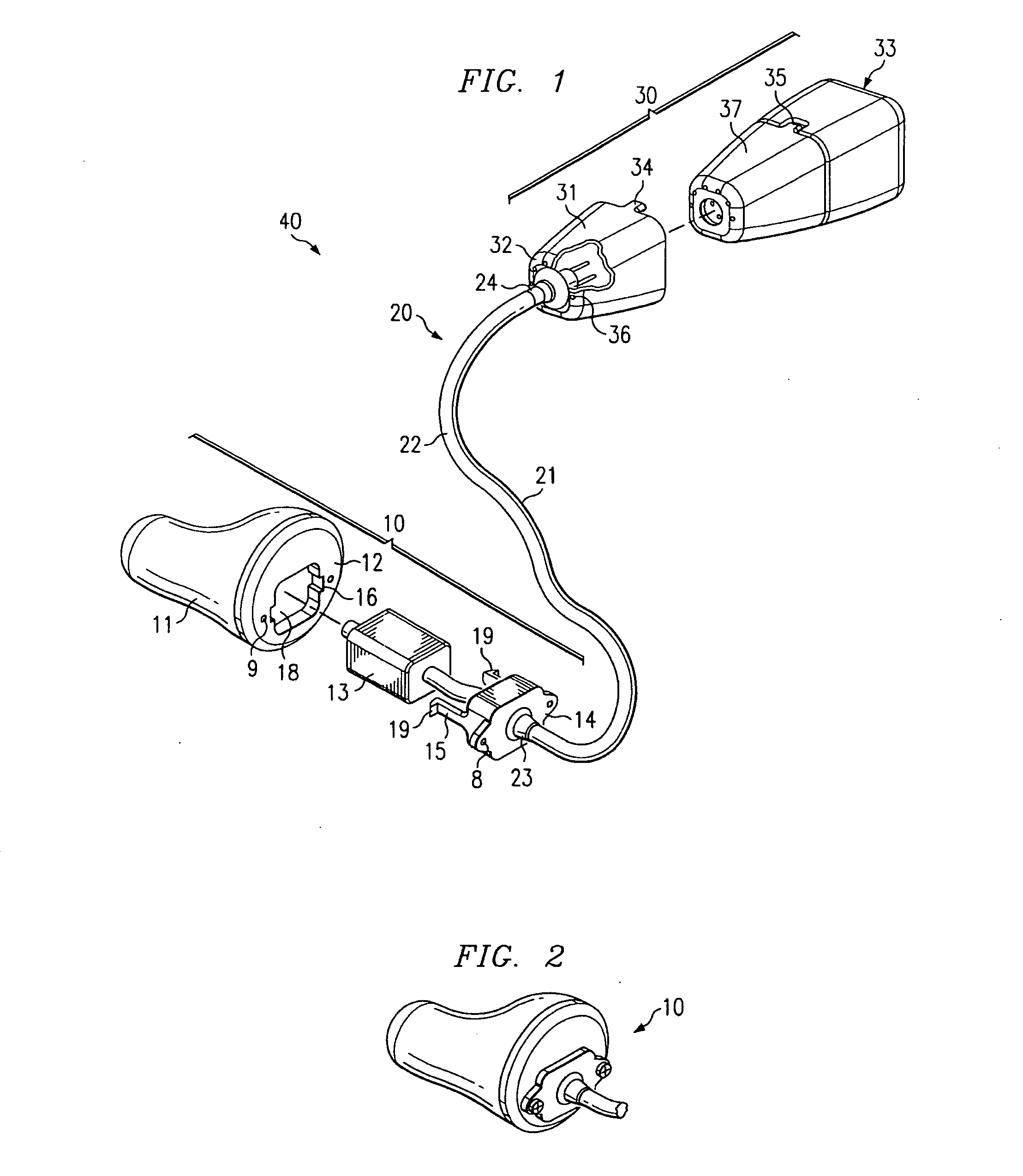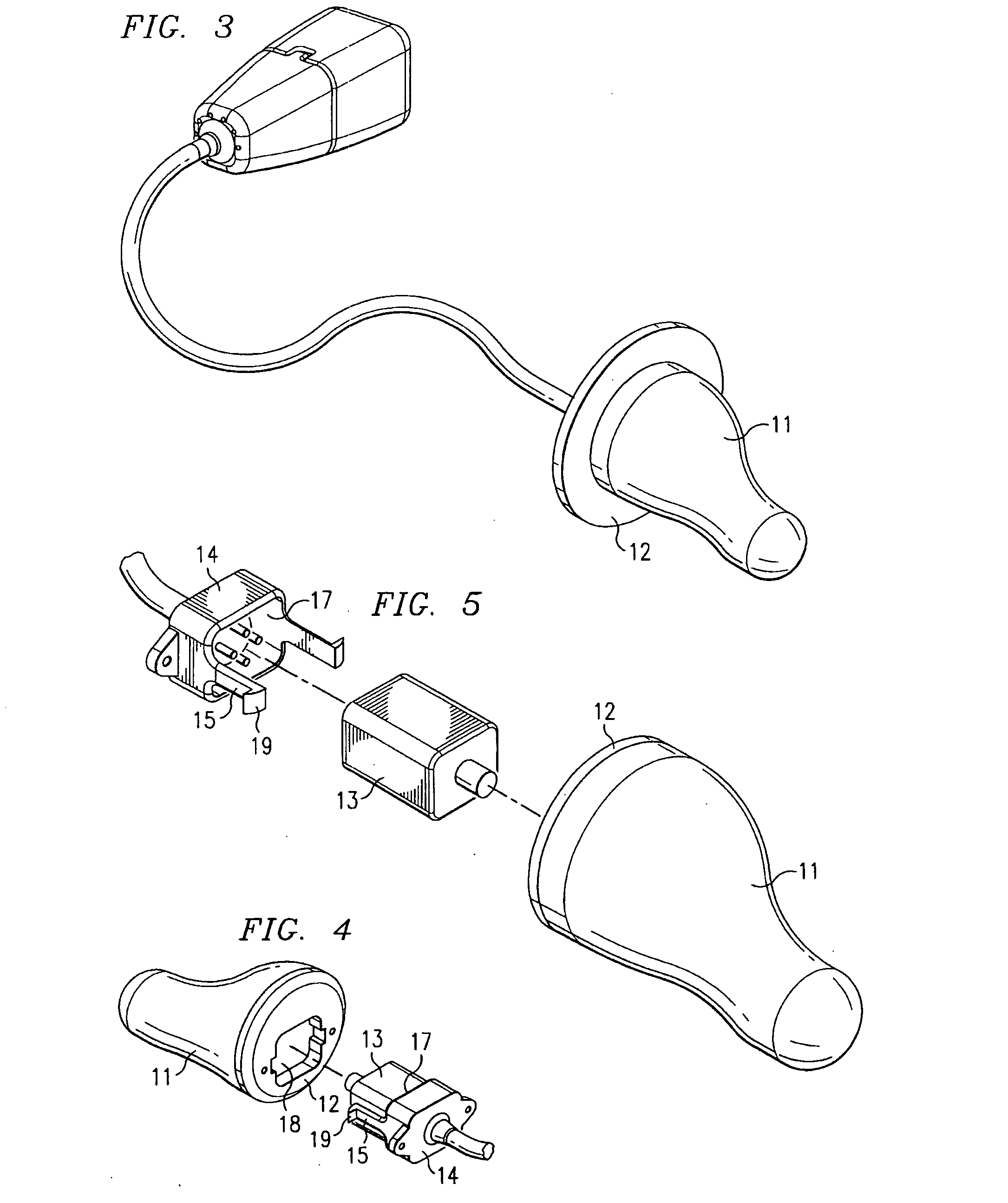BTE/CIC auditory device and modular connector system therefor
a technology of auditory devices and connectors, applied in the field of auditory devices, can solve the problems of cosmetically undesirable devices, bulky and uncomfortable earpiece auditory devices, and users may not want others to know they are using earpiece auditory devices, etc., and achieve the effect of reducing feedback
- Summary
- Abstract
- Description
- Claims
- Application Information
AI Technical Summary
Benefits of technology
Problems solved by technology
Method used
Image
Examples
Embodiment Construction
[0040] The inventors of commonly assigned U.S. Pat. No. 5,606,621 issued Feb. 27, 1997, entitled “HYBRID BEHIND-THE-EAR AND COMPLETELY-IN-CANAL HEARING AID,” the disclosure of which is hereby incorporated herein by reference, developed a hybrid behind-the-ear (“BTE”) / completely-in-canal (CIC) hearing aid. In one embodiment, the hearing aid of the '621 application has two components: a BTE component and a CIC component. Preferably, these components are mechanically isolated from each other. The BTE component, which is worn behind the ear, preferably includes at least a microphone. In one embodiment, the BTE also includes a power source, and sound processing circuitry (e.g., amplifiers, compressors, filters, etc.). Meanwhile, the CIC component is preferably shaped to fit into the ear canal of the patient in such a manner as to touch the bony portion of the ear canal. In one embodiment, the CIC component contains a speaker, the speaker preferably being operatively connected to the soun...
PUM
| Property | Measurement | Unit |
|---|---|---|
| sound attenuation | aaaaa | aaaaa |
| length | aaaaa | aaaaa |
| dimensions | aaaaa | aaaaa |
Abstract
Description
Claims
Application Information
 Login to View More
Login to View More - R&D
- Intellectual Property
- Life Sciences
- Materials
- Tech Scout
- Unparalleled Data Quality
- Higher Quality Content
- 60% Fewer Hallucinations
Browse by: Latest US Patents, China's latest patents, Technical Efficacy Thesaurus, Application Domain, Technology Topic, Popular Technical Reports.
© 2025 PatSnap. All rights reserved.Legal|Privacy policy|Modern Slavery Act Transparency Statement|Sitemap|About US| Contact US: help@patsnap.com



